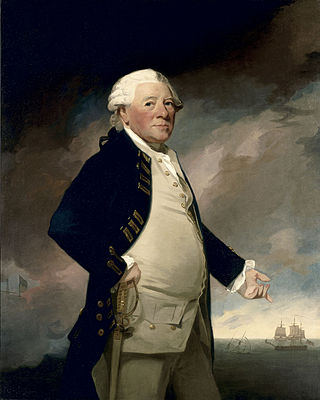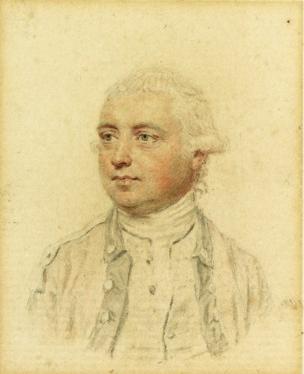Related Research Articles

Earl of Gosford is a title in the Peerage of Ireland. It was created in 1806 for Arthur Acheson, 2nd Viscount Gosford.

Earl of Cottenham, of Cottenham in the County of Cambridge, is a title in the Peerage of the United Kingdom. It was created in 1850 for the prominent lawyer and Whig politician Charles Pepys, 1st Baron Cottenham. ) He served as Lord Chancellor from 1836 to 1841 and from 1846 to 1850. Pepys had already been created Baron Cottenham, of Cottenham in the County of Cambridge, in 1836, and was made Viscount Crowhurst, of Crowhurst in the County of Surrey, at the same time he was given the earldom. These titles are also in the Peerage of the United Kingdom. The viscountcy is used as a courtesy title for the Earl's eldest son and heir apparent.

Baron Stanley of Alderley, in the County of Chester, is a title in the Peerage of the United Kingdom. It was created in 1839 for the politician and landowner Sir John Stanley, 7th Baronet.

Baron Glanusk, of Glanusk Park in the County of Brecknock, is a title in the Peerage of the United Kingdom. It was created in 1899 for Sir Joseph Bailey, 2nd Baronet, who had earlier represented Herefordshire and Hereford in the House of Commons as a Conservative. Both his son, the second Baron, and grandson, the third Baron, served as Lord Lieutenant of Brecknockshire. The latter was succeeded by his first cousin, the fourth Baron. He was the son of the Hon. Herbert Crawshay Bailey, fourth son of the first Baron. As of 2010 the titles are held by his son, the fifth Baron, who succeeded in 1997.

Marquess of Hastings was a title in the Peerage of the United Kingdom. It was created on 6 December 1816 for Francis Rawdon-Hastings, 2nd Earl of Moira.

There have been five baronetcies created for people with the surname Pollock, one in the Baronetage of Nova Scotia and four in the Baronetage of the United Kingdom. As of 2017 three of the creations are extant. These three creations derive from the same family to which the 1703 baronetcy was granted; the Pollock ancestor of Sir Frederick Pollock, 1st Baronet and Sir George Pollock, 1st Baronet married his cousin, daughter of Sir Robert Pollock, 2nd Baronet.
The Stewart, later Shaw-Stewart Baronetcy, of Greenock and Blackhall in the County of Renfrew, is a title in the Baronetage of Nova Scotia. It was created on 27 March 1667 for Archibald Stewart. In Scotland, the name is styled Shaw Stewart. This family is descended in the direct male line from Sir John Stewart, illegitimate son of Robert III of Scotland, who granted him the estate of Ardgowan in Renfrewshire. The third Baronet married Helen, sister and co-heir of Sir John Houston of that Ilk, 4th Baronet, and his wife Margaret, daughter of Sir John Shaw, of Greenock, 2nd Baronet. The fourth Baronet succeeded to the Greenock estates on the death of his great-uncle Sir John Shaw of Greenock, 3rd and last Baronet, in 1752 and assumed the additional surname of Shaw. He later sat as Member of Parliament for Renfrewshire from 1780 to 1783 and from 1786 to 1796.

There have been seven baronetcies created for persons with the surname Parker, three in the Baronetage of England, two in the Baronetage of Great Britain and two in the Baronetage of the United Kingdom. Two of the creations are extant as of 2008. Though none of the different families of baronets were related, several supplied a number of flag officers to the Royal Navy.

Sir Joseph Bailey, 1st Baronet, was an English ironmaster and Conservative Party Member of Parliament (MP).

There have been four baronetcies created for persons with the surname Sykes, two in the Baronetage of Great Britain and two in the Baronetage of the United Kingdom. Three of the creations are extant as of 2008.

General Sir John Dalling, 1st Baronet of Burwood Park in Surrey, was a British soldier and colonial administrator.

There have been two baronetcies created for the Guise family, one in the Baronetage of England and one in the Baronetage of Great Britain. The latter creation is extant as of 2014.

There have been four baronetcies created for persons with the surname Miller, two in the Baronetage of England, one in the Baronetage of Great Britain and one in the Baronetage of the United Kingdom. Two of the creations are extant as of 2008.
The Blunden Baronetcy, of Castle Blunden, in the County of Kilkenny, is a title in the Baronetage of Ireland, created on 12 March 1766 for John Blunden, who represented Kilkenny City in the Irish House of Commons. He was the son of John Blunden, a Member of Parliament for the same constituency.
There have been nine baronetcies created for persons with the surname Moore, two in the Baronetage of England, one in the Baronetage of Ireland, two in the Baronetage of Great Britain and four in the Baronetage of the United Kingdom. As of 2014 two creations are extant and one is considered dormant.
There have been seven baronetcies created for persons with the surname Lawrence, one in the Baronetage of England, one in the Baronetage of Great Britain and five in the Baronetage of the United Kingdom.
This article is about the particular significance of the decade 1780 - 1789 to Wales and its people.
Dalling may refer to:
The High Sheriff of Longford was the British Crown's judicial representative in County Longford, Ireland from the 16th century until 1922, when the office was abolished in the new Free State and replaced by the office of Longford County Sheriff. The sheriff had judicial, electoral, ceremonial and administrative functions and executed High Court Writs. In 1908, an Order in Council made the Lord-Lieutenant the Sovereign's prime representative in a county and reduced the High Sheriff's precedence. However the sheriff retained his responsibilities for the preservation of law and order in the county. The usual procedure for appointing the sheriff from 1660 onwards was that three persons were nominated at the beginning of each year from the county and the Lord Lieutenant then appointed his choice as High Sheriff for the remainder of the year. Often the other nominees were appointed as under-sheriffs. Sometimes a sheriff did not fulfil his entire term through death or other event and another sheriff was then appointed for the remainder of the year. The dates given hereunder are the dates of appointment. All addresses are in County Longford unless stated otherwise.
The High Sheriff of Mayo was the British Crown's judicial representative in County Mayo, Ireland from the 16th century until 1922, when the office was abolished in the new Free State and replaced by the office of Mayo County Sheriff. The sheriff had judicial, electoral, ceremonial and administrative functions and executed High Court Writs. In 1908, an Order in Council made the Lord-Lieutenant the Sovereign's prime representative in a county and reduced the High Sheriff's precedence. However, the sheriff retained his responsibilities for the preservation of law and order in the county. The usual procedure for appointing the sheriff from 1660 onwards was that three persons were nominated at the beginning of each year from the county and the Lord Lieutenant then appointed his choice as High Sheriff for the remainder of the year. Often the other nominees were appointed as under-sheriffs. Sometimes a sheriff did not fulfil his entire term through death or other event and another sheriff was then appointed for the remainder of the year. The dates given hereunder are the dates of appointment. All addresses are in County Mayo unless stated otherwise.
References
- ↑ "No. 12419". The London Gazette . 4 March 1783. p. 1.